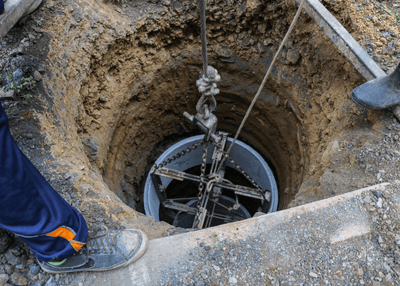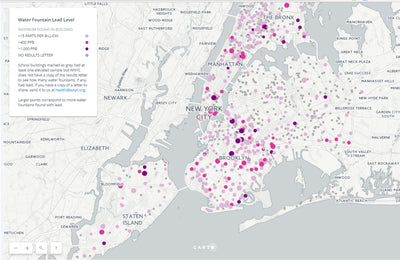Eric Roy, Ph.D. | Scientific Founder
There has been some recent press coverage about arsenic contamination in drinking water. Predictably, our email and support line have been filled with questions on the topic. While we have written other articles in the past about well water in general, the purpose of this article is to specifically answer FAQs about health effects of arsenic in drinking water, and to dispel some myths about arsenic in drinking water.
Why Should I Care About Arsenic In Drinking Water?
Arsenic is a toxic substance that is linked to a long list of health problems in humans. For example, arsenic can cause a number of different cancers (e.g. skin, bladder, lung, liver, prostate), as well as create non-cancerous problems with cardiovascular (heart/blood vessels), pulmonary (lungs), immune, neurological (brain), and endocrine (e.g. diabetes) systems. Simply put, the health effects of arsenic in drinking water are bad news, and you can't see, taste or smell it in water.
What Are The Different Types Of Arsenic Found In Drinking Water?
Nearly all arsenic found in drinking water is inorganic. There are two types of inorganic arsenic, Arsenic(III) and Arsenic(V), and both are toxic. The ratio of the two forms depends on what part of the country you live in, and whether or not your water is chlorinated, because chlorine quickly converts Arsenic(III) to Arsenic(V).
How Does Arsenic Contaminate Drinking Water?
While arsenic-containing pesticides can contaminate water, most arsenic contamination comes from the area's natural geology. This means that arsenic can contaminate seemingly pristine water in certain parts of the country, including private wells. The map below is from USGS and shows arsenic groundwater concentrations. In this map, you can see prevalent arsenic hot spots in places like Maine, Wisconsin, Texas, and various areas across the western part of the US.

How Much Arsenic Is Toxic?
EPA acknowledges that there is no safe level of arsenic for drinking water (MCLG = 0), but has set a regulatory limit of 10 parts per billion (ppb) for arsenic in drinking water. When this level was negotiated, scientists were pushing for 3 ppb, but ultimately EPA decided that the cost of lowering the allowable level to 3 ppb would "not justify the benefits." We recently wrote a dedicated article on how EPA determines acceptable levels of contaminants in drinking water that you can read if you would like more information on this topic.
It's also worth pointing out that a large number of people in the US draw water from private wells, and that most well water "checks" do NOT test for arsenic. If you live in an area on the map with hot spots, we highly recommend getting arsenic testing done by a qualified water testing lab. Test kits from hardware stores are not accurate, and cheap TDS meters and "water testers" tell you nothing about arsenic.
What Can I Do To Reduce Exposure To Arsenic?
A growing number of people are realizing that regulatory limits are not always in line with current studies, and are choosing to eliminate arsenic, lead, and chromium 6 from their drinking water, even if their city is "in compliance" with EPA regulations.
Unlike lead, which leaches into water from pipes, arsenic comes from the source water itself, so flushing pipes or replacing plumbing will not reduce arsenic concentrations. Boiling water also does NOT address arsenic. The only way to properly reduce arsenic is to use a certified water filter.
Whole House Filters
While some whole house filters can reduce arsenic levels to some extent, we don't recommend most whole house water filters due to their high cost and unnecessary filtration of water when it isn't consumed (such as flushing the toilet). Instead, we advocate for point-of-use water filters, which are more efficient and cost-effective for filtering water that is being consumed.
In cases where arsenic levels are very high and exceed our performance specifications, we may suggest considering a specialized arsenic removal filter at your home's point of entry to bring the levels within our operating parameters. Once this is achieved, you can use a Hydroviv filter at your point of use for further arsenic reduction.
Point Of Use Filters
The most cost-effective way to reduce arsenic, chromium 6, and other contaminants is through a point of use filter. When shopping for these systems, we encourage you to make sure that the filter actually filters arsenic (most don't). While we believe that our advanced under sink water filtration systems have unique benefits and use filtration media that effectively reduce both Arsenic(III) and Arsenic(V), some systems that use reverse osmosis can be a good choice for people who are willing to accept the downsides. No matter what... make sure that your filter treats what you think it does!
If you have any questions about filtering arsenic from your home's water, we encourage you to take advantage of Hydroviv’s “Help No Matter What” approach to technical support, where we will help you select an effective water filter system, even if it’s not one that we sell. This free service can be reached by emailing hello@hydroviv.com.











